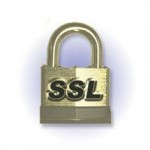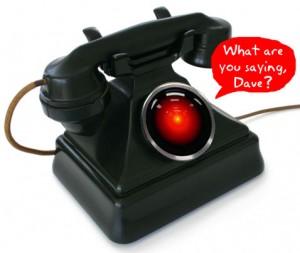 Uhmm.. no they didn’t. First off Microsoft isn’t going to call you, or really any other software company (try phoning their tech support and see how long it takes, imagine them actually phoning people proactively to solve problems).
Uhmm.. no they didn’t. First off Microsoft isn’t going to call you, or really any other software company (try phoning their tech support and see how long it takes, imagine them actually phoning people proactively to solve problems).
The solution: Don’t get rattled and don’t trust anyone (not webpages or people you don’t know).
This applies to those pop-up webpages you can’t close (often with loud messages playing).. “Call this number you are infected, owing taxes, under arrest, piracy, being investigated for terrorism. You often see the terms FBI, RCMP, CIA, CRA and other scary federal agency letters, seals and the like. Just as often you see spelling mistakes and poorly phrased English.
Here’s a quick list of thing to watch for in the ‘Tech Support Phone Scam’, I’ll cover the ‘Webpage scam further down’:
- Clue #1: THEY called YOU
- Clue #2: The Caller ID says ‘Microsoft’, ‘Tech Support’, or something techie sounding
- Clue #3: They have a thick foreign accent and some ‘normal’ sounding name
- Clue #4: They claim your computer is doing ‘something’ (spam, virus, hacking)
- Clue #5: They ask you to open the windows Event Log Viewer
- Clue #6: They ask you to go to a Website and install a Tool (Ammyy, TeamViewer, LogMeIn Rescue, and GoToMyPC)
As long as you don’t let them in (via the remote control programs) they can’t do anything but swear at you. If you do let them in they’ll likely run for SYSKEY and now you have to pay a ransom to get your files back. Couple hundred to a few thousand dollars with no guarantee you get your files back.
The annoying WebPage with plenty of threats and you can’t close it:
- Clue #1: You can’t close the page
- Clue #2: It’s usually playing some loud record voice telling you how you are in serious trouble (virus, taxes, police etc..)
- Clue #3: You have a convient phone number to call to get this all fixed ASAP
If you call you are now in the ‘Tech Support Phone Scam’ at Clue #3 and they will quickly need you to allow them remote access (Clue #6). To get rid of the page you can reboot or in your Taskbar (that bar on the bottom usually) RIGHT click on your browser and select ‘Close All’.
Variations of these scams include:
- A relative needs money for bail in some foreign country, usually they got this information from your relatives FaceBook page.
- CRA/IRS is coming to take your house (foreclose), sometimes they want you to send Bitcoins (digital currency) to some address.
- Some crazy distant relative left you a pile of money but you need to pay for the ‘processing’ so they can mail you some massive cheque from Namibia or something.
If you want to help stop these people, tell others and especially our less digitally knowledgeable relatives (usually older and retired). If you really want to help perhaps take a few lessons from 419 Eater (a site that helps fight back).

 Locky encrypts your data using AES encryption and then demands .5 bitcoins to decrypt your files. Though the ransomware sounds like one named by my kids, there is nothing childish about it. It targets a large number of file extensions and even more importantly, encrypts data on unmapped network shares. If you don’t have a backup your data is gone, unless you pay and hope they payment isn’t yet another scam.
Locky encrypts your data using AES encryption and then demands .5 bitcoins to decrypt your files. Though the ransomware sounds like one named by my kids, there is nothing childish about it. It targets a large number of file extensions and even more importantly, encrypts data on unmapped network shares. If you don’t have a backup your data is gone, unless you pay and hope they payment isn’t yet another scam. People often get the terms “virtualization” and “cloud computing” confused, believing that they can be used interchangeably when, in fact, they are diametrically opposed.
People often get the terms “virtualization” and “cloud computing” confused, believing that they can be used interchangeably when, in fact, they are diametrically opposed.
 On June 27th 2012 Microsoft accidentally put Skype into thier ‘Important’ updates for the WSUS. What happened was that millions of users got Skype installed on thier desktop without consent and let’s face.. not really needing it.
On June 27th 2012 Microsoft accidentally put Skype into thier ‘Important’ updates for the WSUS. What happened was that millions of users got Skype installed on thier desktop without consent and let’s face.. not really needing it. You know that little HTTPS: we all love to trust when we do online transactions.. well the old versions (TLS v1.0 and earlier) have been compromised. This means a serious weakness in virtually all websites protected by the secure sockets layer protocol that allows attackers to silently decrypt data that’s passing between a web-server and an end-user browser.
You know that little HTTPS: we all love to trust when we do online transactions.. well the old versions (TLS v1.0 and earlier) have been compromised. This means a serious weakness in virtually all websites protected by the secure sockets layer protocol that allows attackers to silently decrypt data that’s passing between a web-server and an end-user browser. There’s a good chance if you’ve been reading or listening to the news you’ve heard tell of a mysterious group called ‘Anonymous’. They have no leader, answer to no one and for the most part are a complete enigma when one considers how groups work.
There’s a good chance if you’ve been reading or listening to the news you’ve heard tell of a mysterious group called ‘Anonymous’. They have no leader, answer to no one and for the most part are a complete enigma when one considers how groups work. “Hello, this is your computer company and we are making this free call because you have a computer virus spamming the net.”
“Hello, this is your computer company and we are making this free call because you have a computer virus spamming the net.”